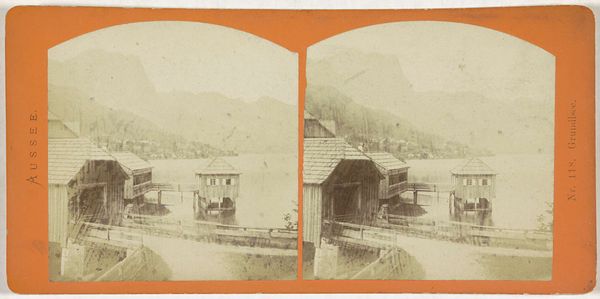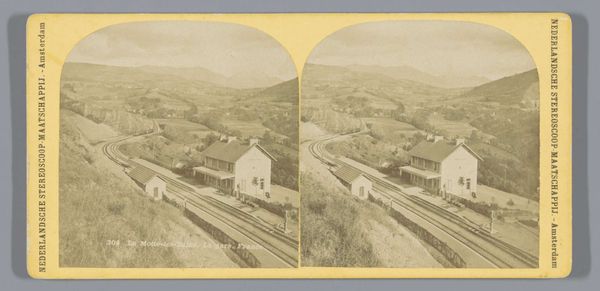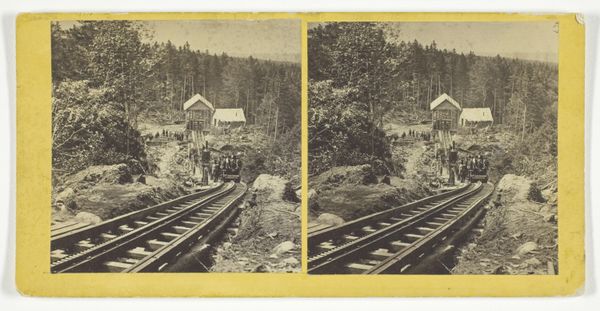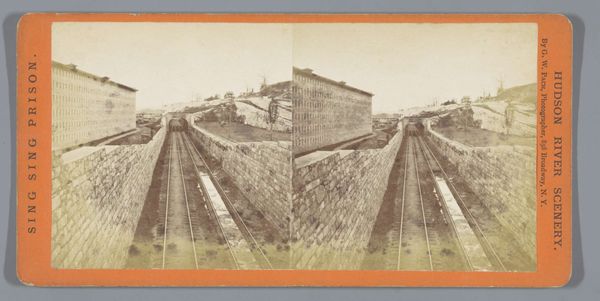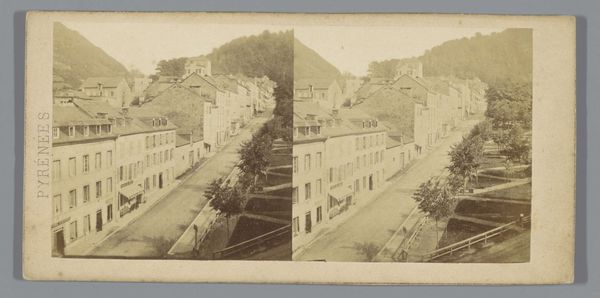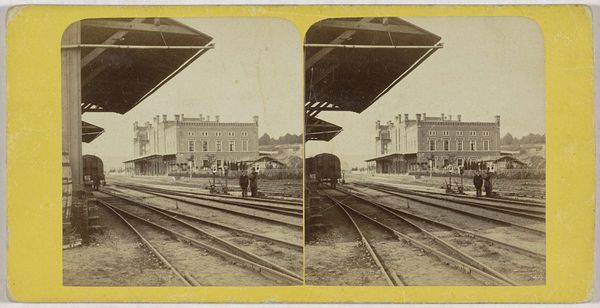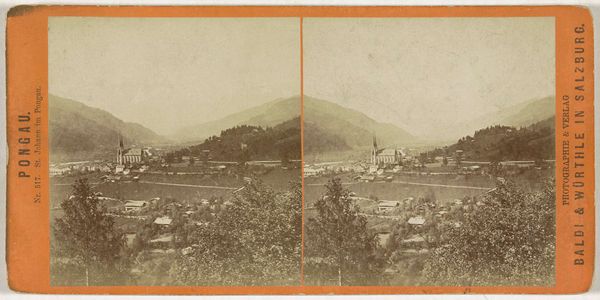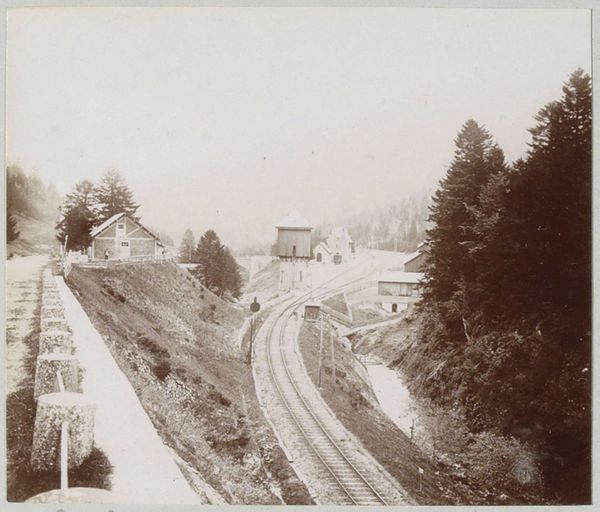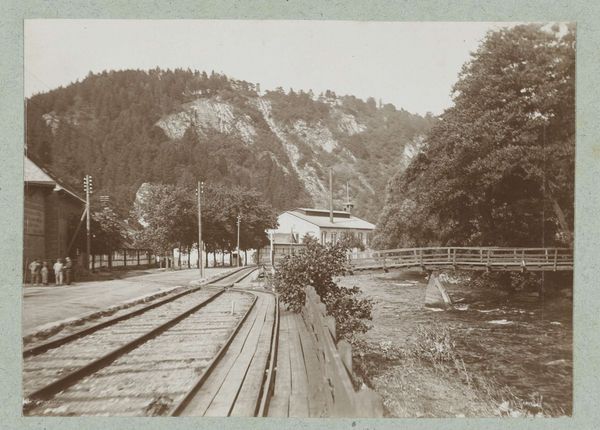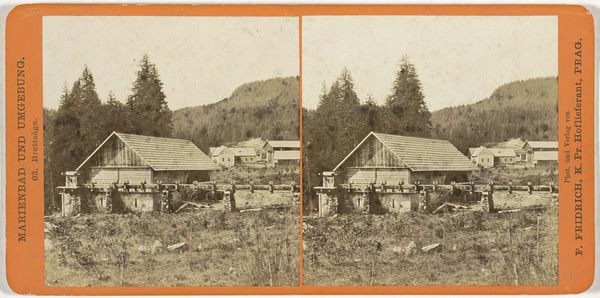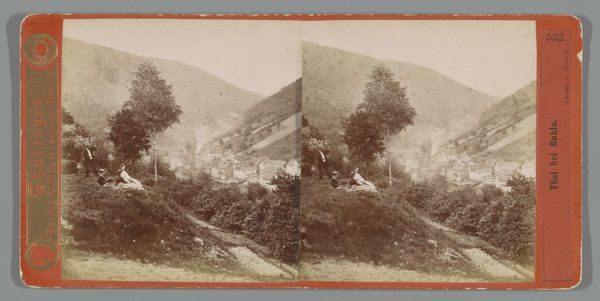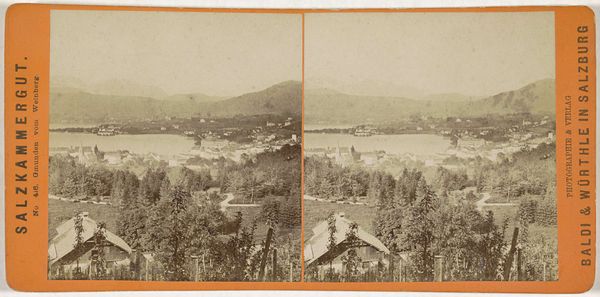
print, photography
# print
#
landscape
#
photography
#
cityscape
#
realism
Dimensions: height 86 mm, width 176 mm
Copyright: Rijks Museum: Open Domain
Curator: This fascinating photograph, "Station van Breitenstein am Semmering," attributed to Oprawil & Co., dates roughly from 1868 to 1890. Editor: The first impression is quite subdued, almost melancholic. The tonal range is narrow, creating a muted landscape, though the symmetry and clear linear perspective provide a strong, ordered structure. Curator: Indeed, the perspective is critical, leading the eye along the railway tracks towards a vanishing point that emphasizes distance and the linear aspect of the railroad's function within the landscape. Considering the albumen print process employed, this creates an incredible sense of depth. Editor: The stark presence of the railway platform amidst this scene sparks thought of the raw materials required for its creation – the hewn wood, forged iron, and the physical labor to assemble. There's an understated commentary here about human intervention reshaping the landscape, powered by 19th-century industry. Curator: It also speaks to the philosophical shift of the time. Observe how the receding lines create a dynamic thrust, and juxtapose it with the blockish facade of the building to one side: the station becomes a still point that highlights that push forward; change incarnate versus enduring establishment. Editor: Speaking of "change," look at the back of the photograph—there's text mentioning publishers like "Verlag Von, Carpentier, and Ebeling" alongside information about distribution. Even the printing itself demonstrates layers of production and labor involved in mass distributing images. Curator: Precisely, and in considering those dualities we can arrive at a structural tension; it gives context to the scene itself. How travel connects to place, how permanence relies on transience. This dialogue speaks volumes when we understand the structures involved, visible and invisible. Editor: Agreed, this photograph functions as more than just a document of place; it opens a conversation about how resources and effort shape not only our environment but our perceptions. Seeing that gives the print an edge in its documentary importance. Curator: Very well said, truly this exploration into form, materiality and structural implication opens further analysis of the socio-economic shifts evident within its frame.
Comments
No comments
Be the first to comment and join the conversation on the ultimate creative platform.
